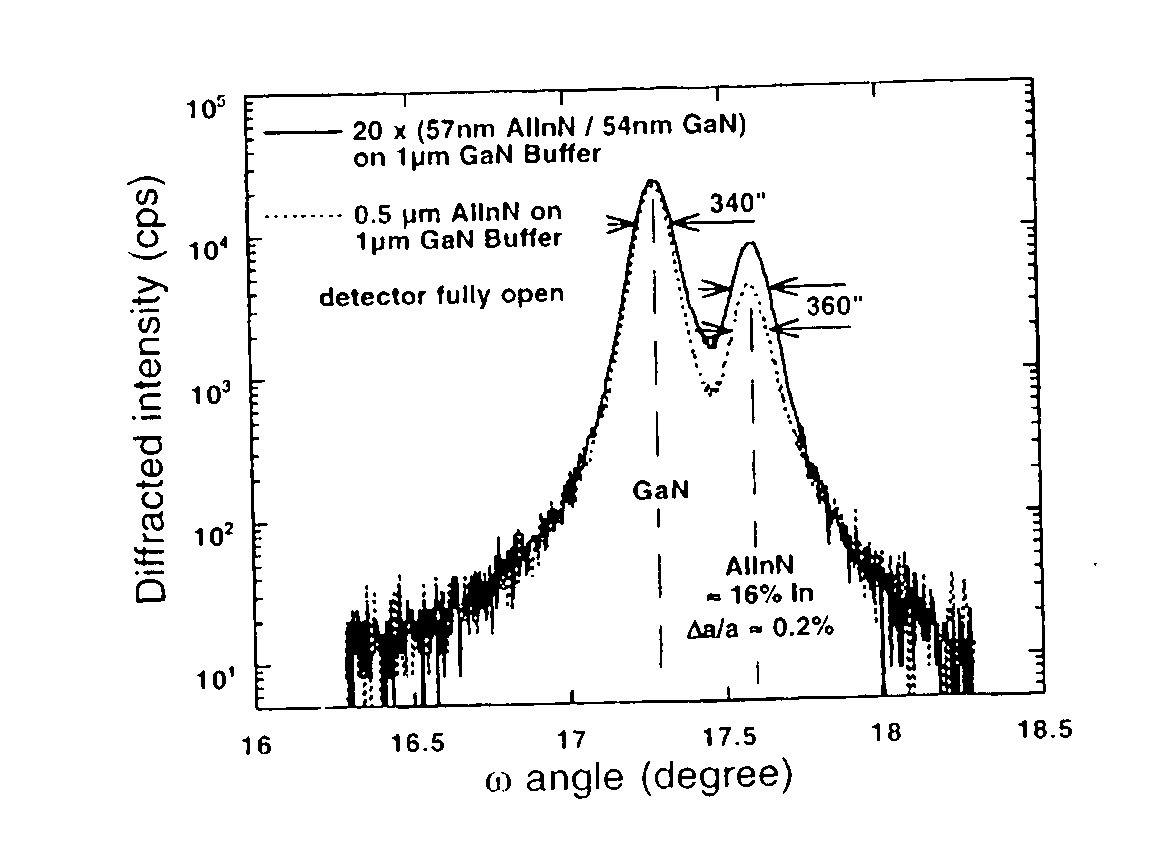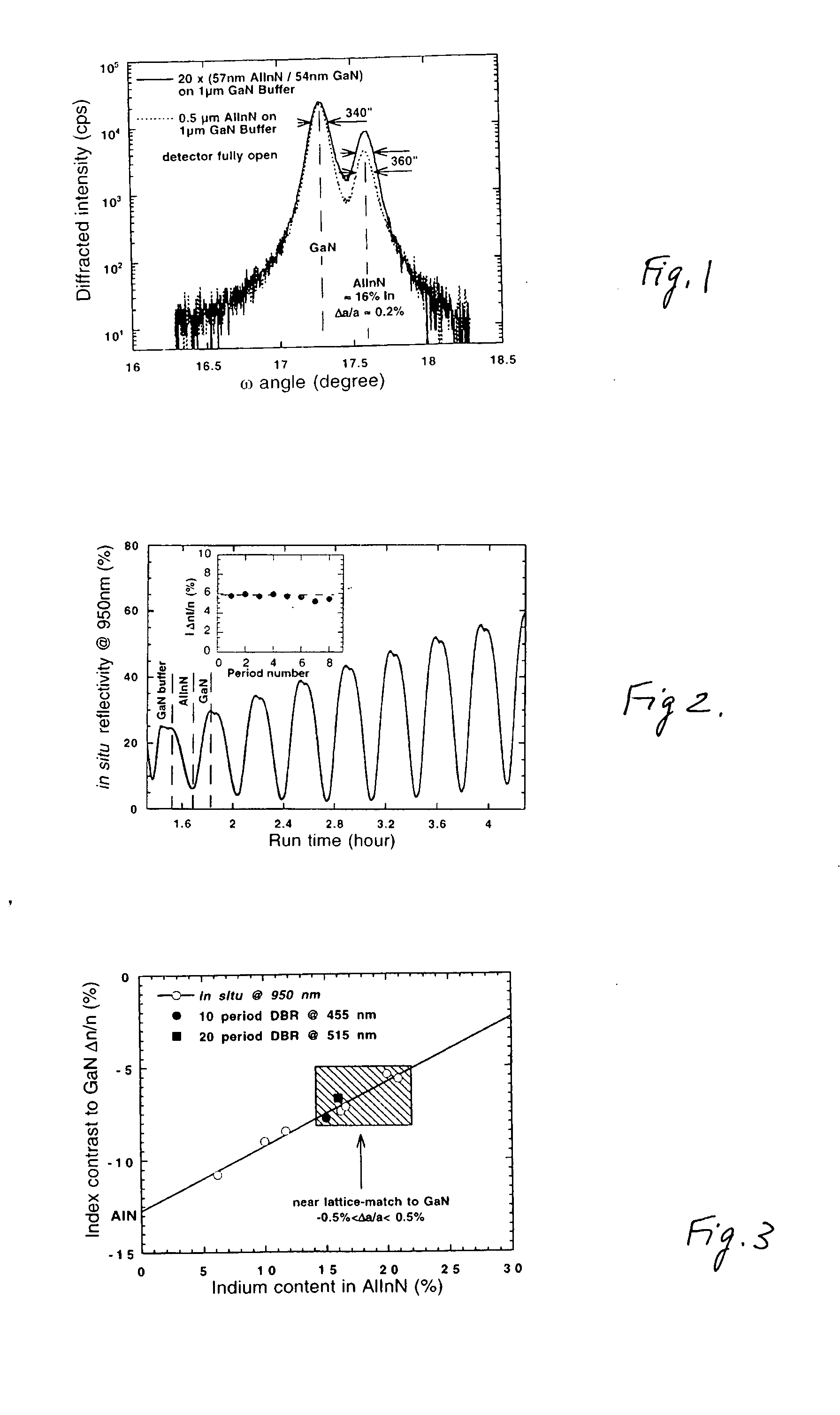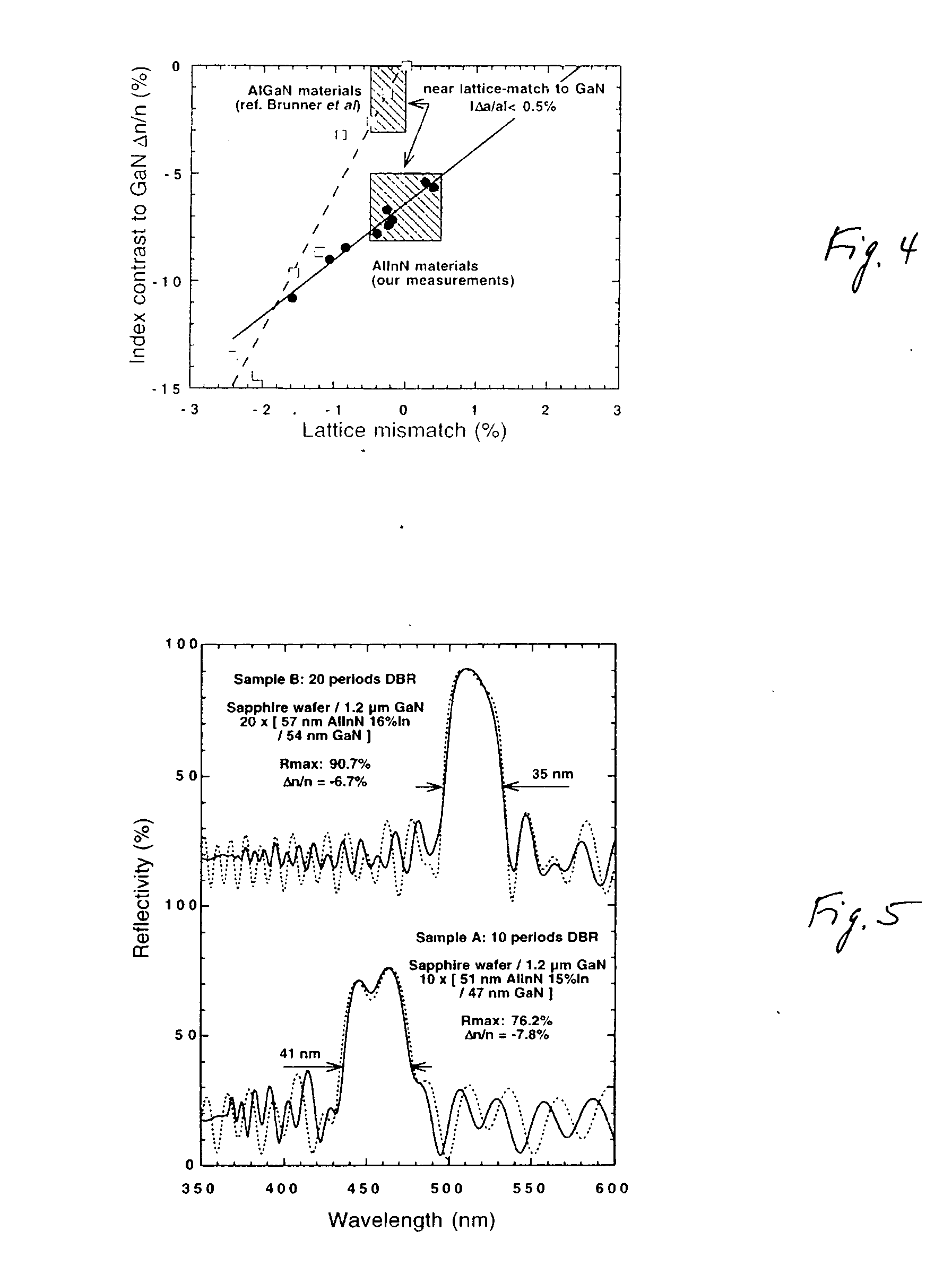Lattice-matched AllnN/GaN for optoelectronic devices
a technology of optoelectronic devices and allnn/gan, which is applied in the direction of semiconductor lasers, polycrystalline material growth, crystal growth process, etc., can solve the problems of no longer lattice-matched dbrs, dbrs are subject to the same issue, and may cause strain relaxation problems
- Summary
- Abstract
- Description
- Claims
- Application Information
AI Technical Summary
Benefits of technology
Problems solved by technology
Method used
Image
Examples
Embodiment Construction
[0010] Growth has been achieved of Al0.84In0.16N / GaN DBRs near lattice-matched to GaN. Such DBRs are optically equivalent to state-of-the art Al0.6Ga0.4N / GaN mirrors and avoid the issues related to strain. Layers were grown in an AIXTRON 200 / 4 RF-S metalorganic vapor phase epitaxy system, on 2-inch c-plane sapphire substrates. The growth was initiated by a low-temperature GaN nucleation layer followed by a 1 μm thick GaN buffer layer. AlInN was deposited between 800° C. and 850° C. and at 50 to 75 mbar pressure using N2 carrier gas. Lower growth temperatures led to lower crystalline quality as revealed by high resolution X-ray diffraction (HRXD) (0002) scans. Higher growth temperatures resulted in decreased indium incorporation so that near-lattice matched alloys could no longer be obtained. Deposition rates ranged between 0.6 and 0.2 μm / h. During the DBR runs, growth was interrupted at each interface. GaN was deposited at 1050° C. using H2 and N2 carrier gas.
[0011] No degradation ...
PUM
| Property | Measurement | Unit |
|---|---|---|
| wavelength | aaaaa | aaaaa |
| pressure | aaaaa | aaaaa |
| temperature | aaaaa | aaaaa |
Abstract
Description
Claims
Application Information
 Login to View More
Login to View More - R&D
- Intellectual Property
- Life Sciences
- Materials
- Tech Scout
- Unparalleled Data Quality
- Higher Quality Content
- 60% Fewer Hallucinations
Browse by: Latest US Patents, China's latest patents, Technical Efficacy Thesaurus, Application Domain, Technology Topic, Popular Technical Reports.
© 2025 PatSnap. All rights reserved.Legal|Privacy policy|Modern Slavery Act Transparency Statement|Sitemap|About US| Contact US: help@patsnap.com



